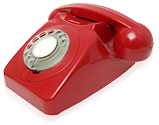| Tel. 01983 530070 |
| Mob. 07881825747 |
| Email. |
Shot BlastingHistorically, the medium used in the sandblasting process was sand that had been sieved to a uniform size. Sand used to be the most commonly used material, but the lung disease silicosis is caused by extended inhalation of the dust created by sand so other materials are now used in its place Mediums developed as a replacement for Sand in Sandblasting include steel grit, steel shots, copper slag, glass beads (Bead Blasting), metal pellets, dry ice, garnet, powdered abrasives of various grades, powdered slag, and even ground coconut shells or corncobs, walnut shells, Baking Soda have been used for specific applications which gives rise to a distinct surface finish. Deciding which kind of grit, also called "media," to use is based on the material getting sandblasted and the processes for which the materials are prepared. Shot Blasting Considerations Sandblasting Wood requires a softer grit than you would use on metal. Aluminum requires a gentler grit than steel. Brass or fiberglass requires a softer abrasive media than aluminum. The type of material you are sandblasting determines which type of grit you must use. To remove individual layers of paint, while leaving body primer or filler material intact, use plastic beads. Corn cob is considered a very effective grit for sandblasting log homes. Walnut shell is an angular medium that does not damage the underlying substrate material. Glass beads are often used on small, precision parts because it will not add chemical components or change the dimension of parts. Choice of Abrasive Media will be reflected in overall cost of the Sandblasting operation. Glass beads are recoverable and reusable up to 30 times, which make this quite economical for deburring, the removal of raised bits or jagged edges left from industrial processes. It can also be used for paint removal Weigh the environmental impact of your choice of abrasive grit. Plastic beads are made of acrylic, melamine or urea, which require proper reclamation and disposal. Corn cob and walnut shells are organic materials that will not harm the environment, but are unsuitable for all Sandblasting projects. Soda blasting, done with sodium carbonate, requires the disposal of potentially harmful waste. |
|
| Call
today for a free, no obligation consultation 01983 530070 or 07881825747 or alternatively email us at |
 |
read more.. read more.. |